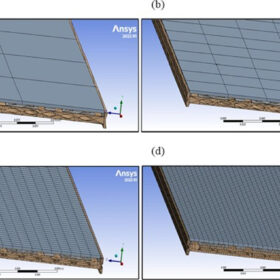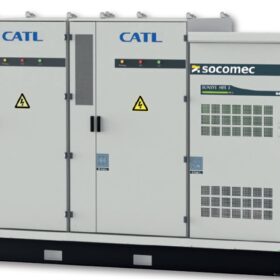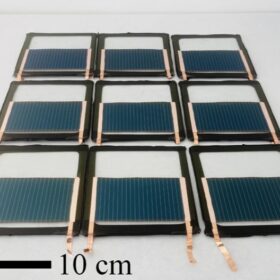Photovoltaic water pumping based on open-ended winding induction
Indian scientists have designed a water-pump drive system that is powered exclusively by photovoltaics. The proposed system configuration reportedly ensures effective use of both the solar modules and the motor.
Solar module cooling tech based on waste neem oil
An international research team has placed a neem oil tank on the back of solar modules for cooling purposes. The proposed solution reportedly improves PV panel performance by up to 17.8%.
Growatt launches new balcony storage solution
The new product combines the NEO 800TL-X Microinverter and the NOAH 2000 Battery. Up to four batteries can be stacked, for up to 8,192 Wh of storage capacity.
Israel hits 51% renewable production for first time
The Israeli government said that earlier this month, for several minutes, renewable energy accounted for most of the nation’s energy production. In particular, solar covered 45% of total generation.
New tech to remanufacture recycled perovskite solar cells
An international research team has developed a novel way to remanufacture fully encapsulated perovskite solar cells after recycling. The researchers say the devices can achieve 88% of the original efficiency of the products.
Aerocompact releases new portrait mounting system
Austrian manufacturer Aerocompact has developed the SN2 Q PLUS solar mounting system, which can support PV modules measuring up to 1,310 mm x 2,500 mm. It has an installation angle of between 5 degrees and 10 degrees.
New design for photovoltaic-thermal panels mitigates risk of cracking
Researchers in Sweden have developed a new PVT module using an aluminum alloy structure between the thermal absorber and the photovoltac cells. This architecture reportedly reduces thermal expansion by 20%, thus increasing the chances of mitigating cracks in the PV unit.
The Hydrogen Stream: Prime Minister Narendra Modi inaugurates India’s first indigenous green hydrogen fuel cell ferry
Prime Minister Narendra Modi launched a green hydrogen fuel cell inland waterway vessel designed, developed and manufactured by Cochin Shipyard. He also inaugurated various other projects aimed at making Tamil Nadu’s V.O. Chidambaranar Port the first Green Hydrogen Hub Port of the country.
Socomec releases new modular energy storage system
Socomec says its new modular energy storage system includes a converter and up to six battery cabinets. At maximum capacity, it can store 1,116 kWh.
US researchers develop 108 cm2 perovskite solar module with 19.21% efficiency
The scientists built the panel with perovskite solar cells treated with trifluoromethane sulfonate to combat iodide defects. The mini module reportedly achieved the highest efficiency ever recorded for its size to date, with the result being confirmed by the US National Renewable Energy Laboratory (NREL).















